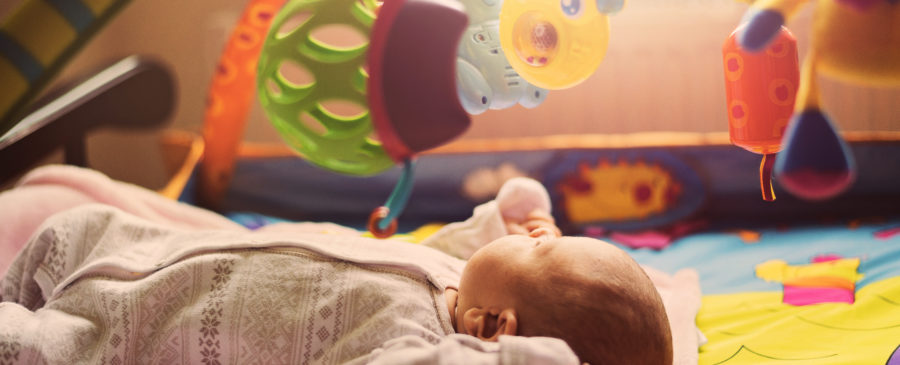Little Lessons: What Childhood Development Teaches Us About Marketing

Every parent wants the best for their children. And in most cases, they will do just about anything in their power to make it possible. That instinctive love for a child can even play tricks with parental psychology, to make them believe in something wholeheartedly — simply because they want to create positive outcomes for their loved ones.
Sometimes the belief that something will help our children is so powerful that it creates an overwhelming expectation. This is exactly what I found through decades of work with my client, Tiny Love®, an innovative global brand that creates developmental toys for infants and toddlers. But this profound finding just scratches the surface of the full story. The real hero of the narrative is marketing priming — and the domino effect it can create for brands. Keep reading to discover the insights I garnered from my work with Tiny Love, and how you can implement them in your own marketing efforts.
Priming
After years of research with child psychologists to develop their toys, Tiny Love positioned their products with the belief that they truly stimulate childhood development. This was not just an earnest move to create beneficial products for kids, but an ingenious method of showing how Tiny Love stood above every other competitor in the industry. These products were more than just for playing, or keeping babies busy, they actually helped them learn and grow while engaging in activities that they love. The company’s extensive research allowed us to use convincing scientific data that shaped the belief that Tiny Love products were a better choice, because they stimulated specific stages of babies’ natural developmental processes. Parents who made a purchase could rest assured knowing their babies were in the right hands. But it goes a step further…
Expectation
What happened next came down to the powerful effect marketing can have on human psychology. The parents wanted their babies to be the smartest they could be, developing as fully and efficiently as possible for their age. They purchased toys that they believed could make a positive impact on their child. As a result, they experienced what I call Expectation. In this case, a belief-driven anticipation that the toys will, in fact, help their babies’ growth. So as their kids happily used their toys, parents expected to see the results that their priming instilled in them. Of course, there is still more to the story.
Desire
The third element in this case is the parents’ motivation to see the anticipated impact fulfilled, or as I call it, Desire. The parents’ expectation that the toy would give them the desired result made them motivated to actually see it work in real time. As they watched their baby’s glorious development, they created an association between new milestones and the toy. Regardless of the scientific data backing up the parents’ beliefs, they reached a higher, more tangible conclusion about the product than what that data could offer.
BRANDcebo
This is no accident. Through the careful positioning of Tiny Love products as a developmental system, rather than simply “toys,” something truly powerful occurred. In my years of research, I coined the term BRANDcebo to describe the powerful placebo effect that brands can create for their customers. It starts with distilling a belief (priming), building a wishful anticipation that is based on the acquired belief (expectation), which then leads to the innate motivation (desire) to see the brand produce the best possible results. In this case, parents wanted their babies to reach their highest physical and cognitive growth potential. The parents witnessed the tangible impact the toys made on their child’s growth and attributed it to Tiny Love’s seemingly magical toys.
While the power of this case is profound, it is just one tiny aspect of what brands like Tiny Love have taught us about marketing. This wealth of information is distilled in my unique BRANDcebo model, one you won’t find anywhere else. Now that you have experienced one of the steps towards your desired milestone, check out my book here to develop the full effect for your brand.
